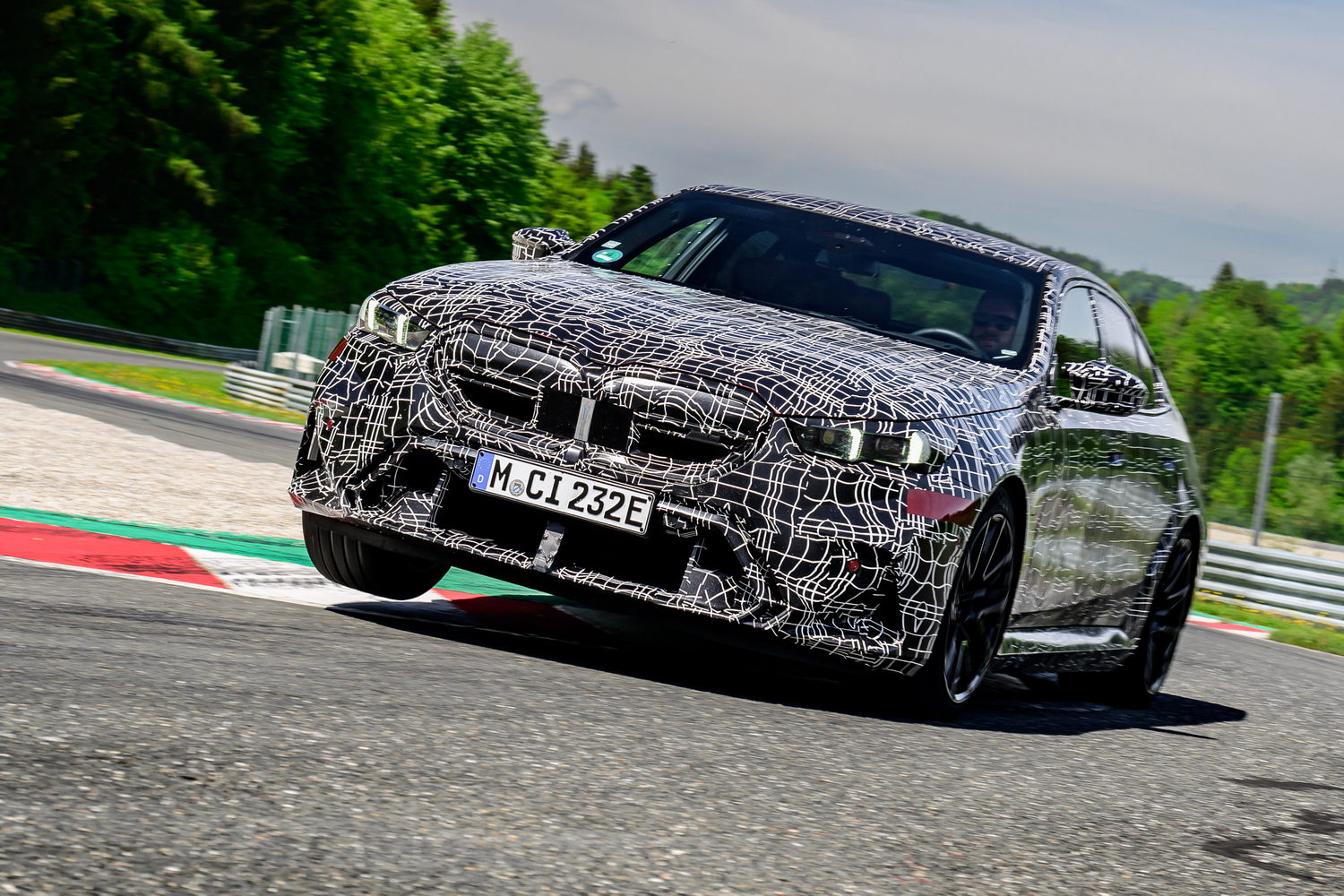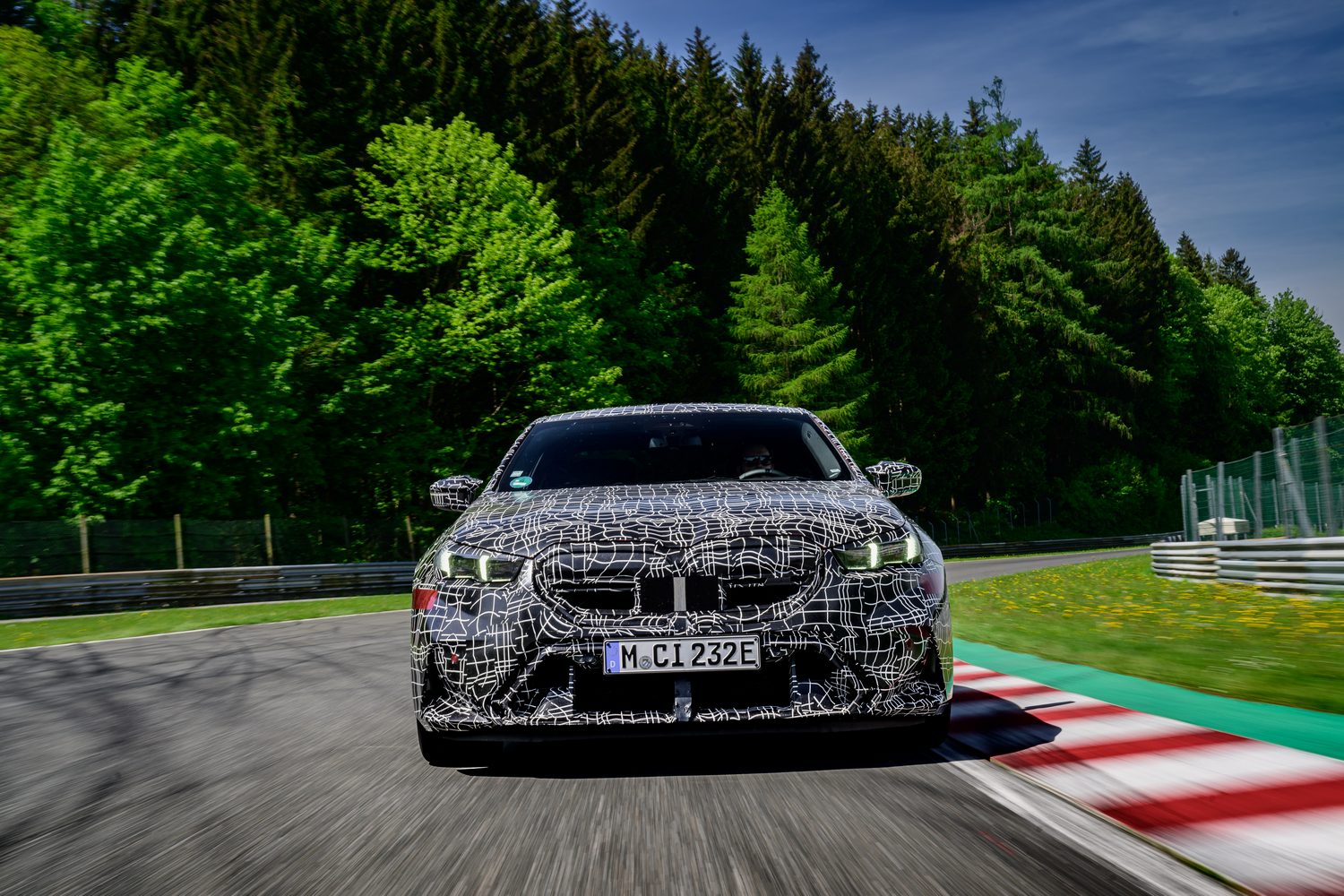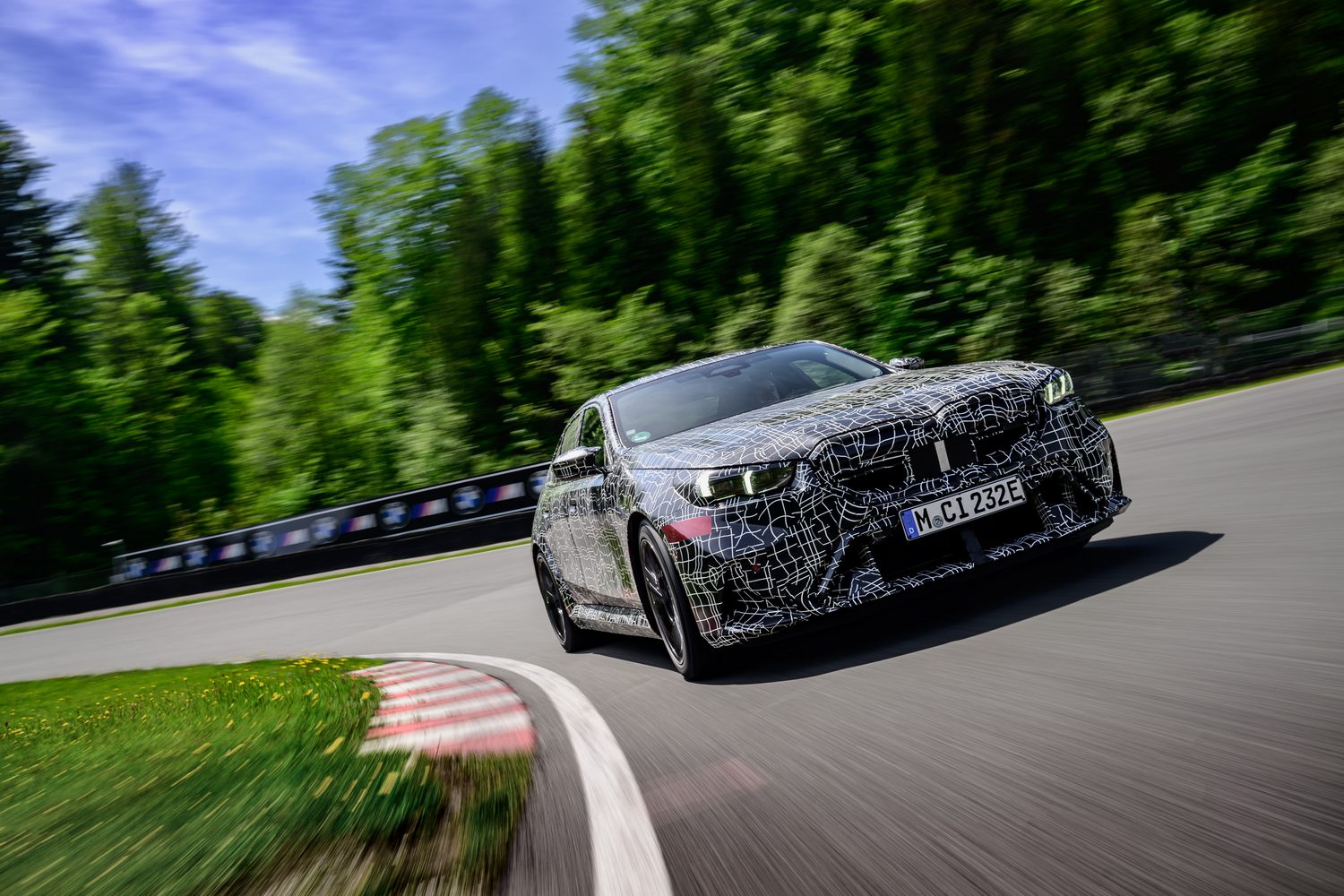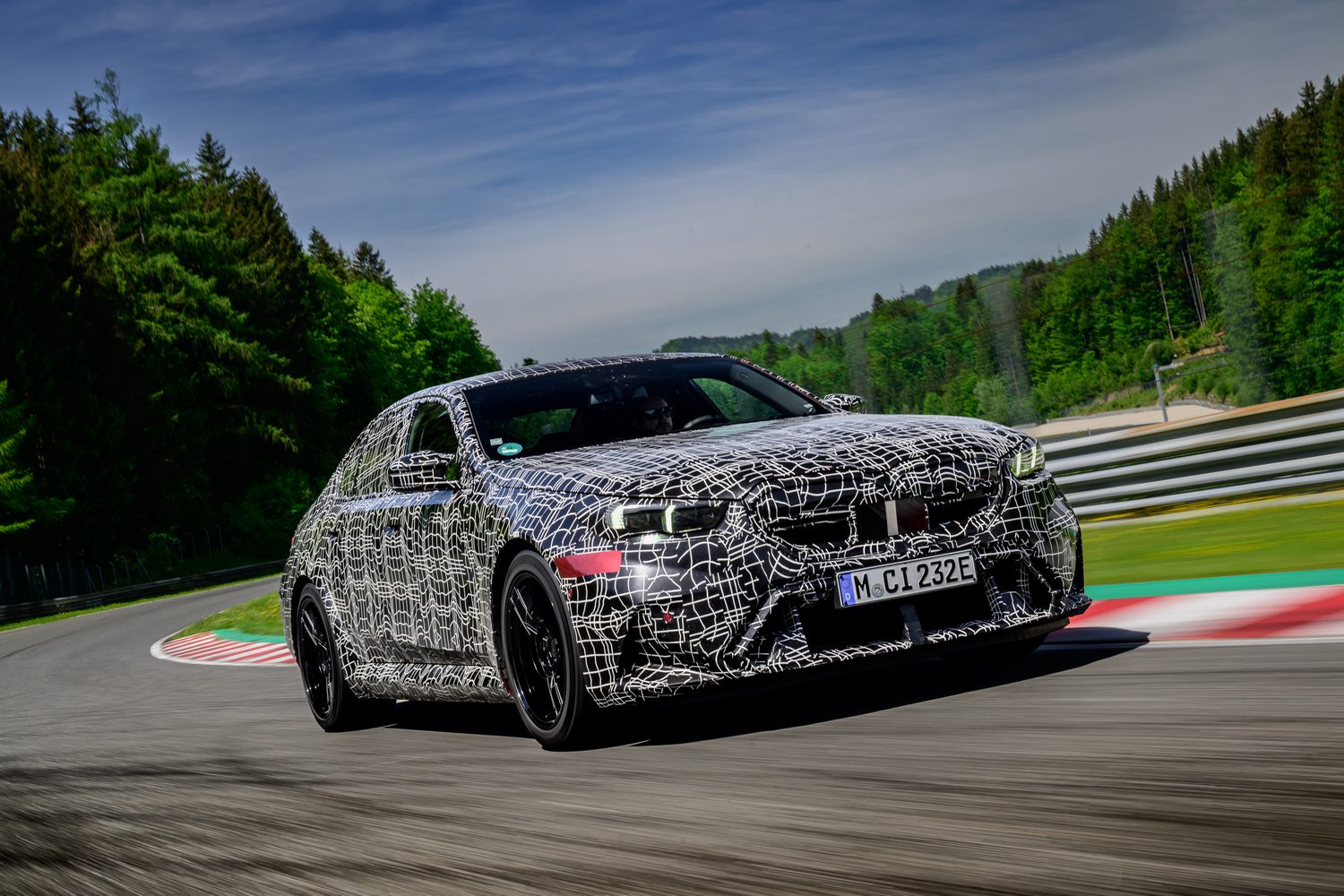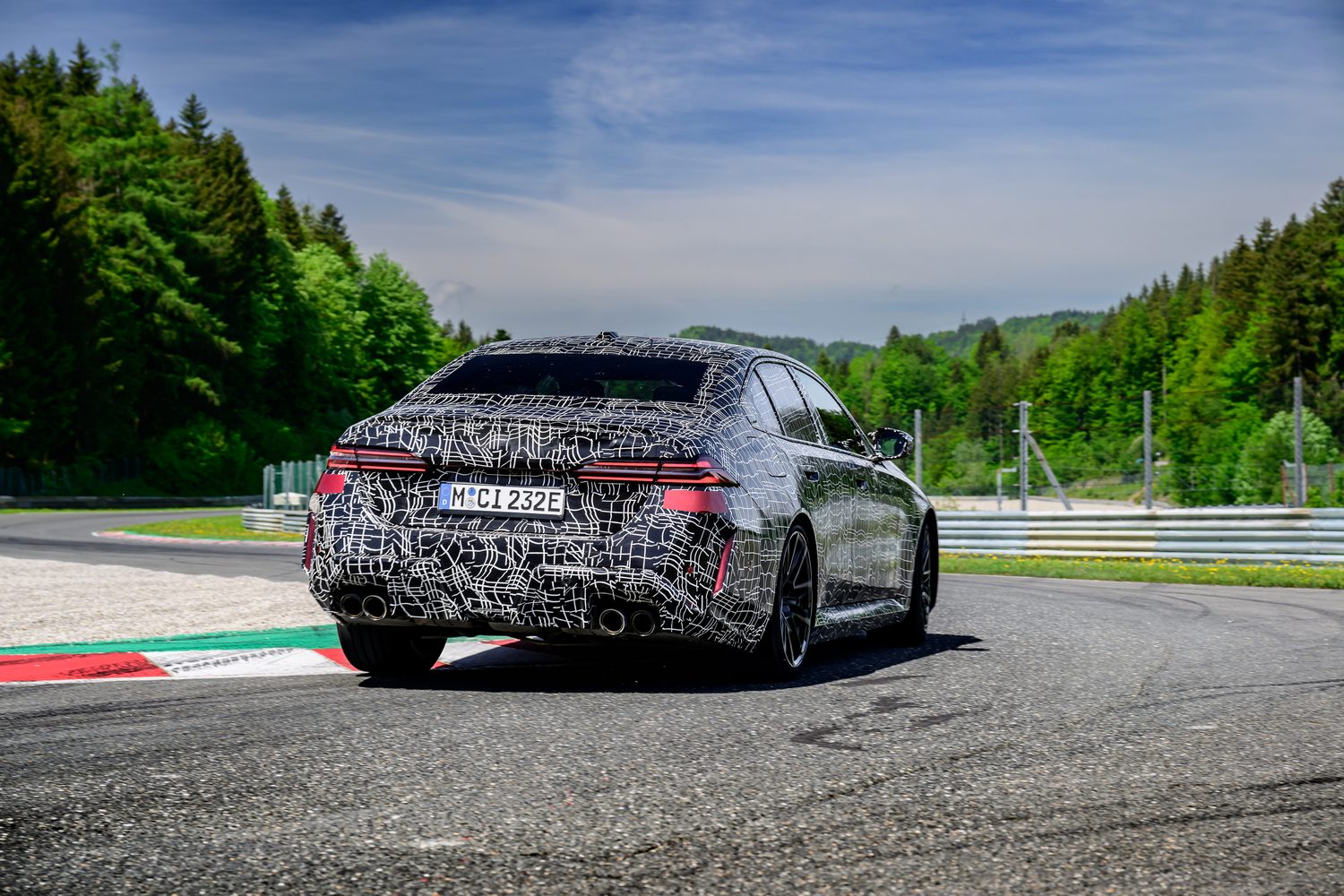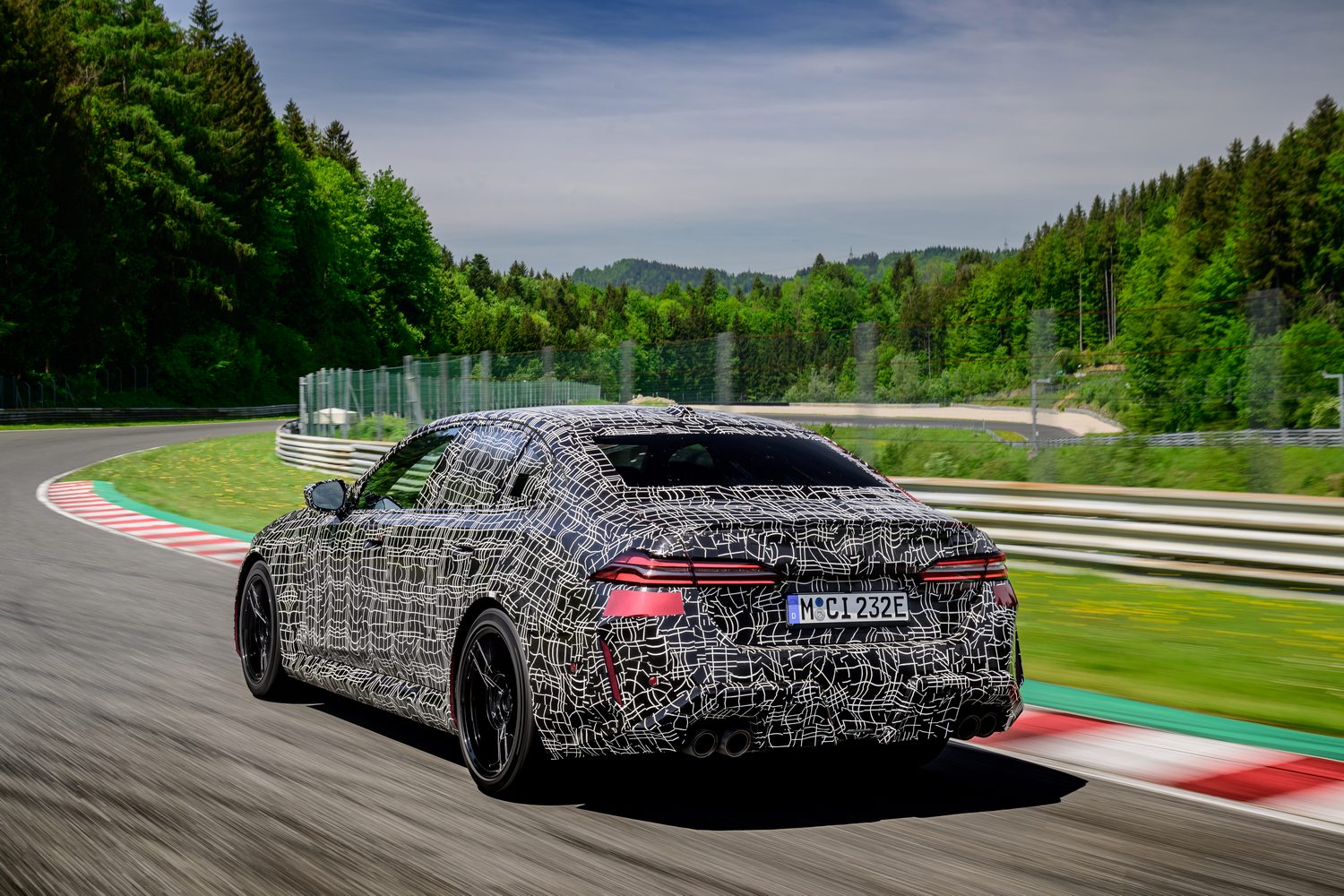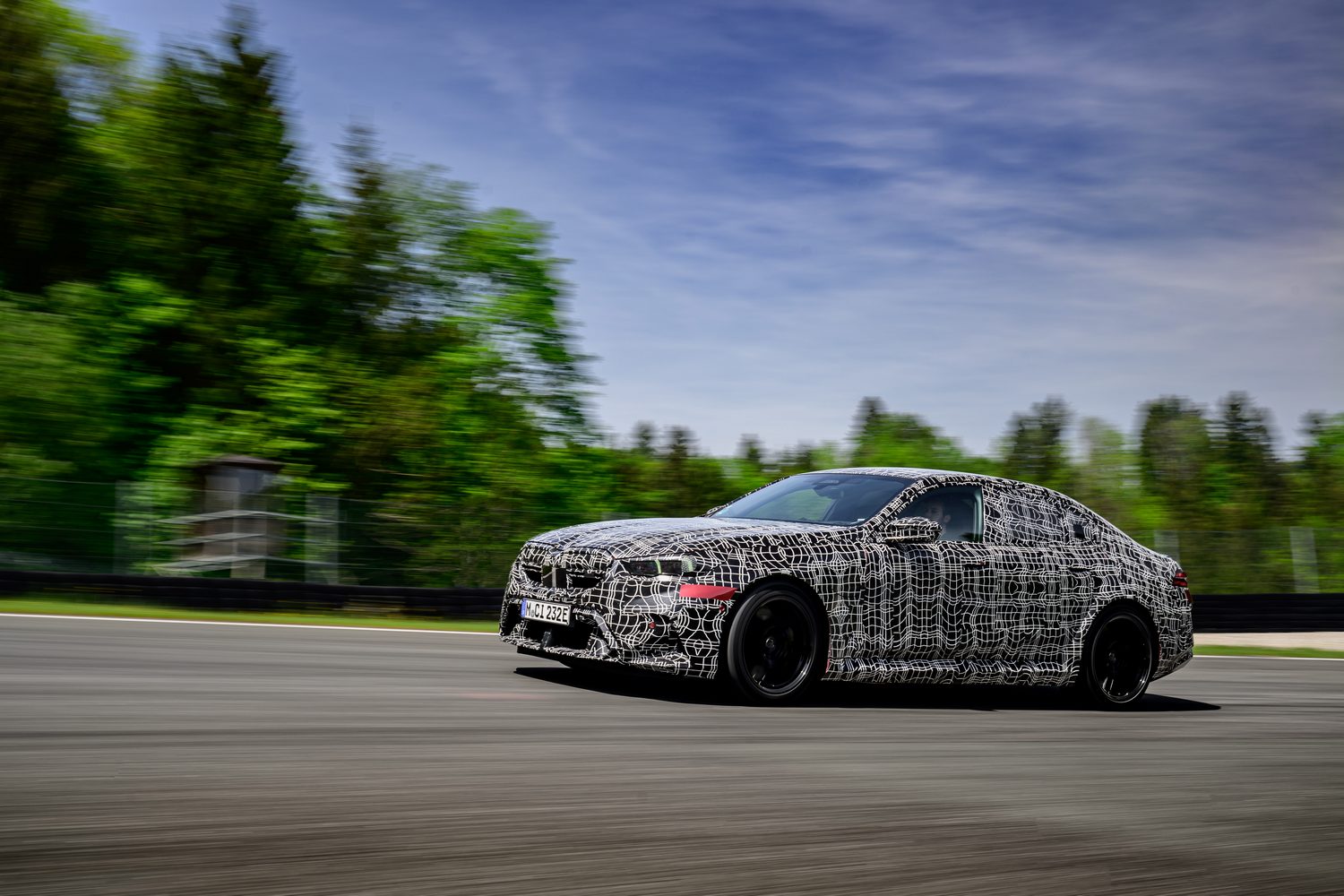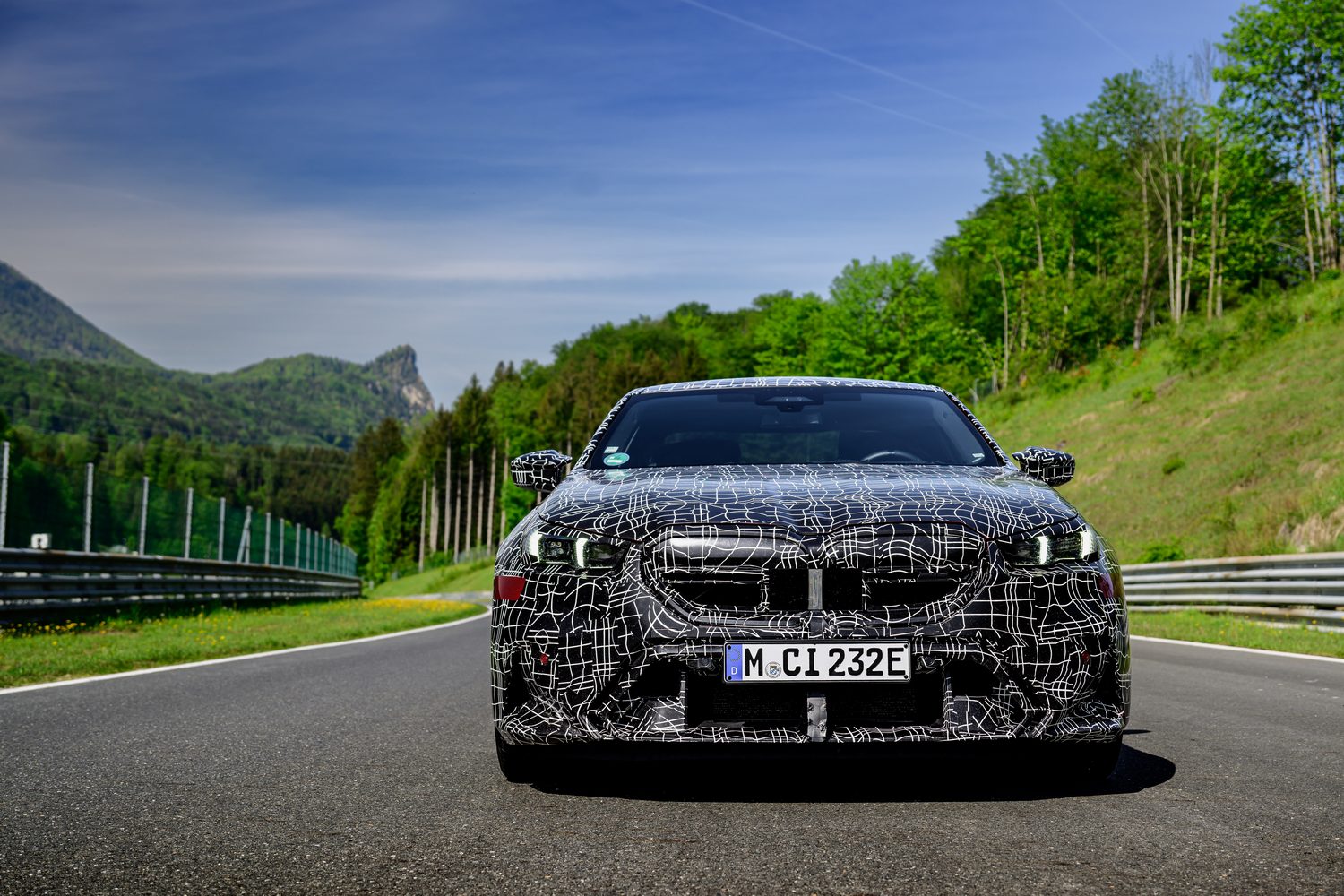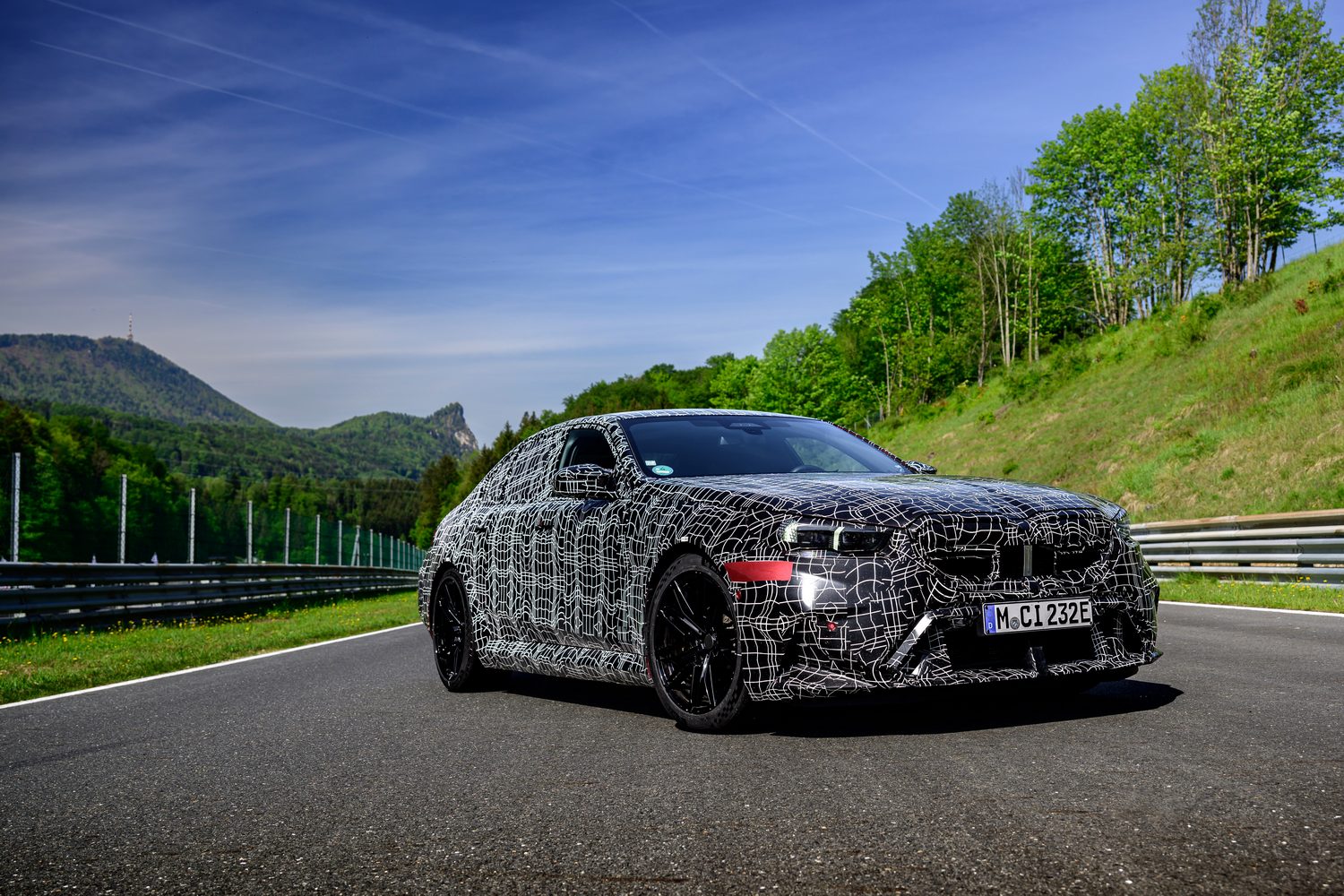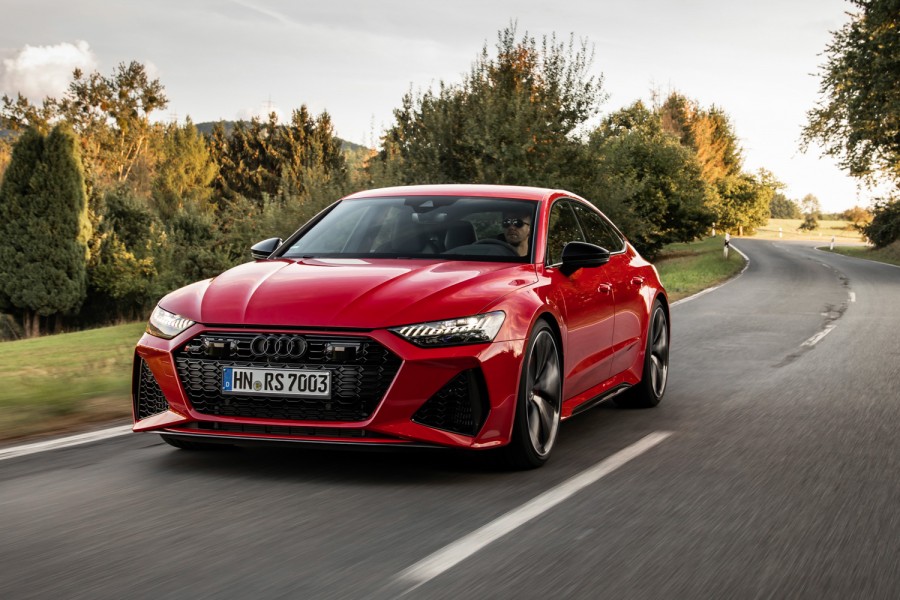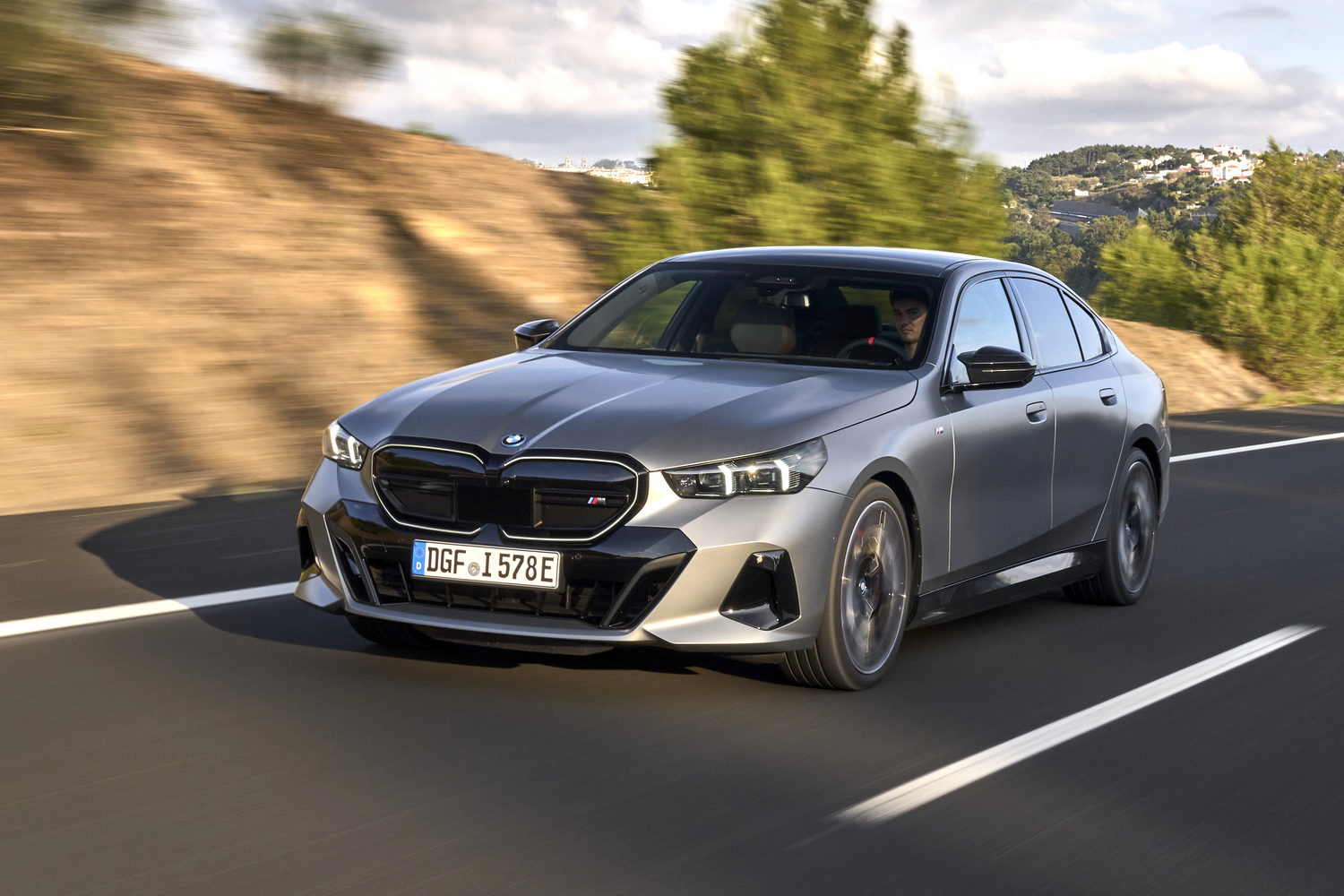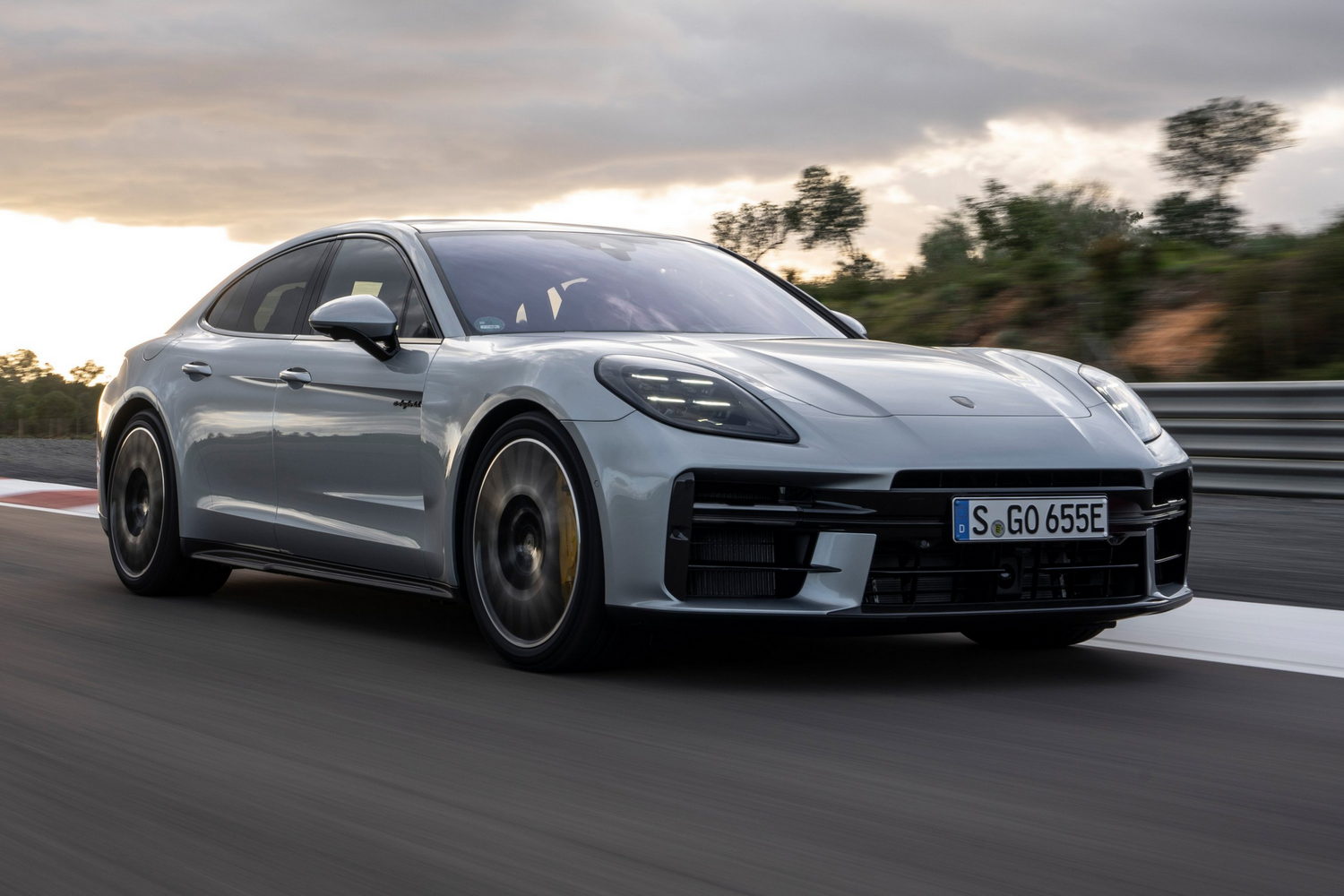As it has always done, the BMW M5 is moving with the times. Fans of the supersaloon since it first hit the market in the mid-eighties - based on the ‘E28’ 5 Series - have witnessed it evolve from naturally-aspirated straight-six power in the first two generations to a glorious V8 in the E39 and then the bonkers V10-engined E60 saloon. That sired the sublime E61 M5 Touring before the first turbocharged M5 arrived in the shape of the 2011 ‘F10’ - BMW M reverting to the V8 configuration and sticking with it ever since. One of the biggest changes to the M5 came in the previous generation (F90) with the introduction of M xDrive all-wheel drive. And now it’s time for another reinvention as BMW unveils the 2025 model - codenamed G90 - with plug-in hybrid power.
Ahead of the new M5’s launch later this year we had a chance to take a pre-production prototype on track for a morning of fast laps at the Salzburgring circuit in Austria.
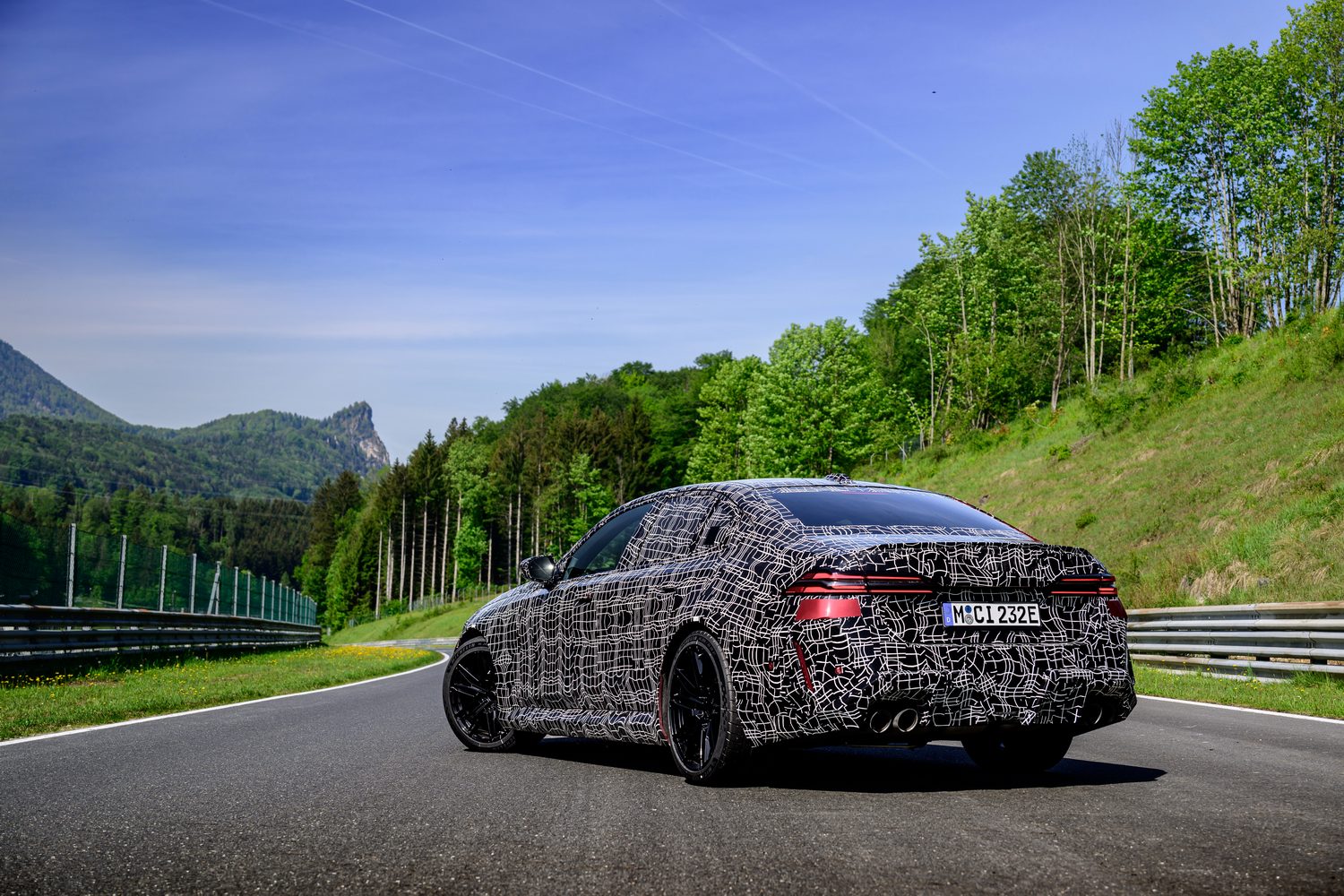
Tell me about the hybrid system in the 2025 BMW M5
At the track, BMW M’s boss, Franciscus van Meel admitted to us that the M5 development team considered a multitude of options for the new M5’s powertrain - including smaller engines with less cylinders and a non-plug-in hybrid system - before concluding that the V8 was integral to the appeal of the car and that a useful electric range was desirable in Europe especially. The challenge was then to make the hybrid system powerful enough, and the chassis of the M5 competent enough, to overcome the significant weight gain of a plug-in hybrid system - some 500kg.
Under the bonnet is the familiar twin-turbocharged 4.4-litre V8 petrol engine using twin-scroll turbos. Other highlights include high-pressure direct fuel injection, Valvetronic variable valve timing and Double-Vanos variable camshaft timing. On its own, this unit makes up to 585hp at 5,600-6,500rpm and a whopping 750Nm of torque from just 1,800rpm up to 5,400rpm.
Bolted to the back of the V8 is an eight-speed automatic transmission BMW calls M Steptronic and within its casing is the electric motor rated at 145kW and 280Nm. The maximum power and torque figures produced when the engine and motor work together are 727hp and 1,000Nm, respectively.
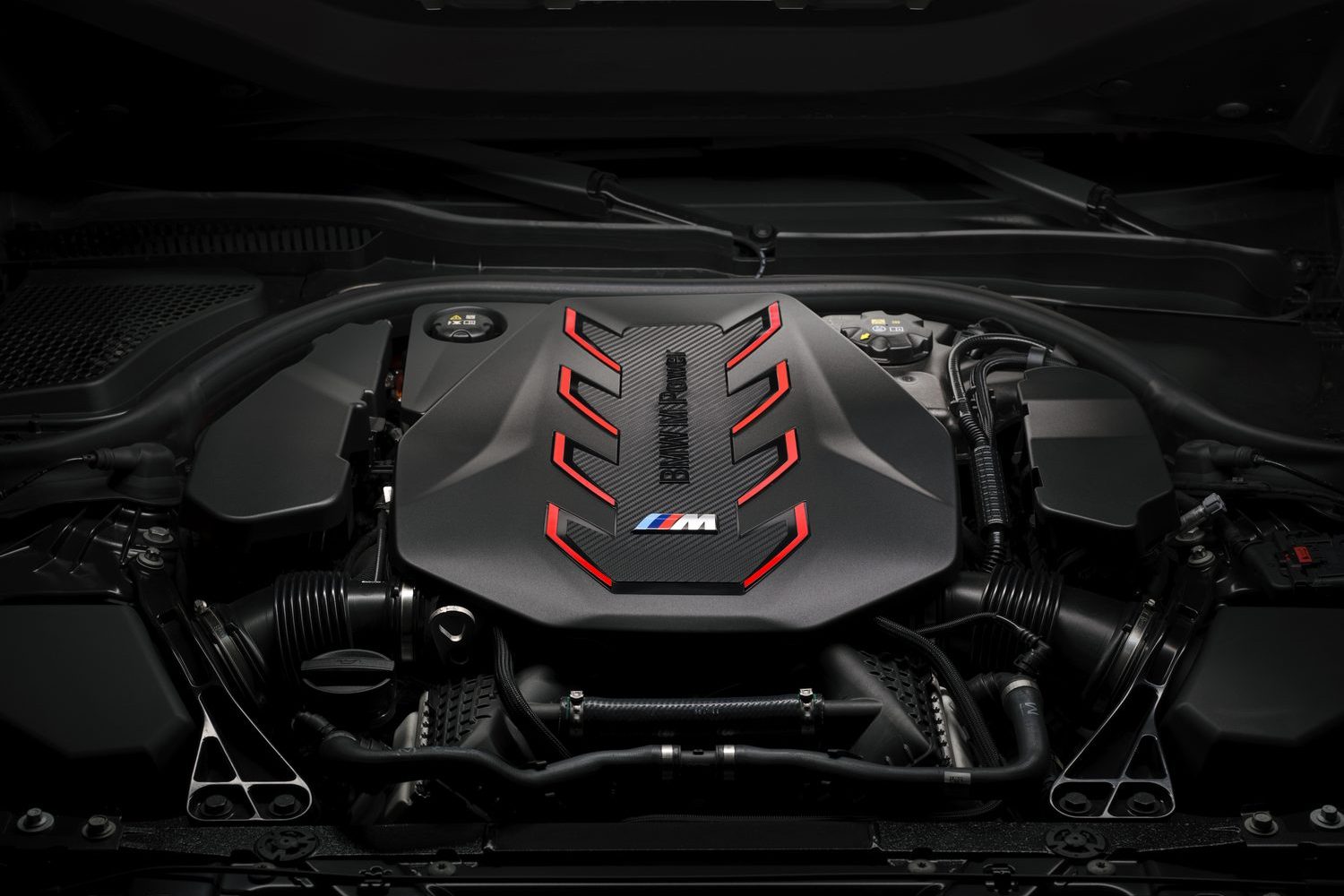
A sizeable lithium-ion battery is mounted under the floor, with 18.6kWh usable energy capacity. As in all hybrids and EVs, the motor can operate as a generator under deceleration to charge up the battery pack. The official all-electric range of the M5 is up to 69 kilometres and using electric power alone the car can reach a speed of 140km/h. The maximum recharging rate of the battery from an external AC source is 7.4kW.
As before, power goes to all four wheels by default, with a rear bias, whether the car is using the engine or not in this case. There’s an open differential on the front axle, a centre differential to split the hybrid system’s output between the front and rear to any ratio and an Active M Differential to split what it receives to any ratio across the back axle. Three settings for the all-wheel-drive system have been retained - namely the default 4WD mode, 4WD Sport and 2WD, the latter a rear-drive-only option where the stability control is switched off.
Driving the BMW M5
We didn’t get to try every single driving setting and mode during our on-track stint in Austria due to time restraints and the ban on drifting the car, but it’s still a real statement of intent from BMW M to allow us to push this car to its limits on such a fast and challenging race circuit for our first taste of it. And make no mistake, the M5’s performance is more than enough, even with relatively wide expanses of smooth tarmac in front of it.
The peak power figure is impressive, but it’s the any-speed torque that defines the performance of this car. It’s seemingly irrelevant which of the eight gears you’re in and what number is on the rev counter, as the turbocharged V8 and the electric motor conspire to fling the M5 forward at serious pace. Through it all, there’s a loud, meaty, exhaust-lead roar from the engine that’s very much from the BMW M stable. It takes just one blast of hard acceleration to appreciate all this.
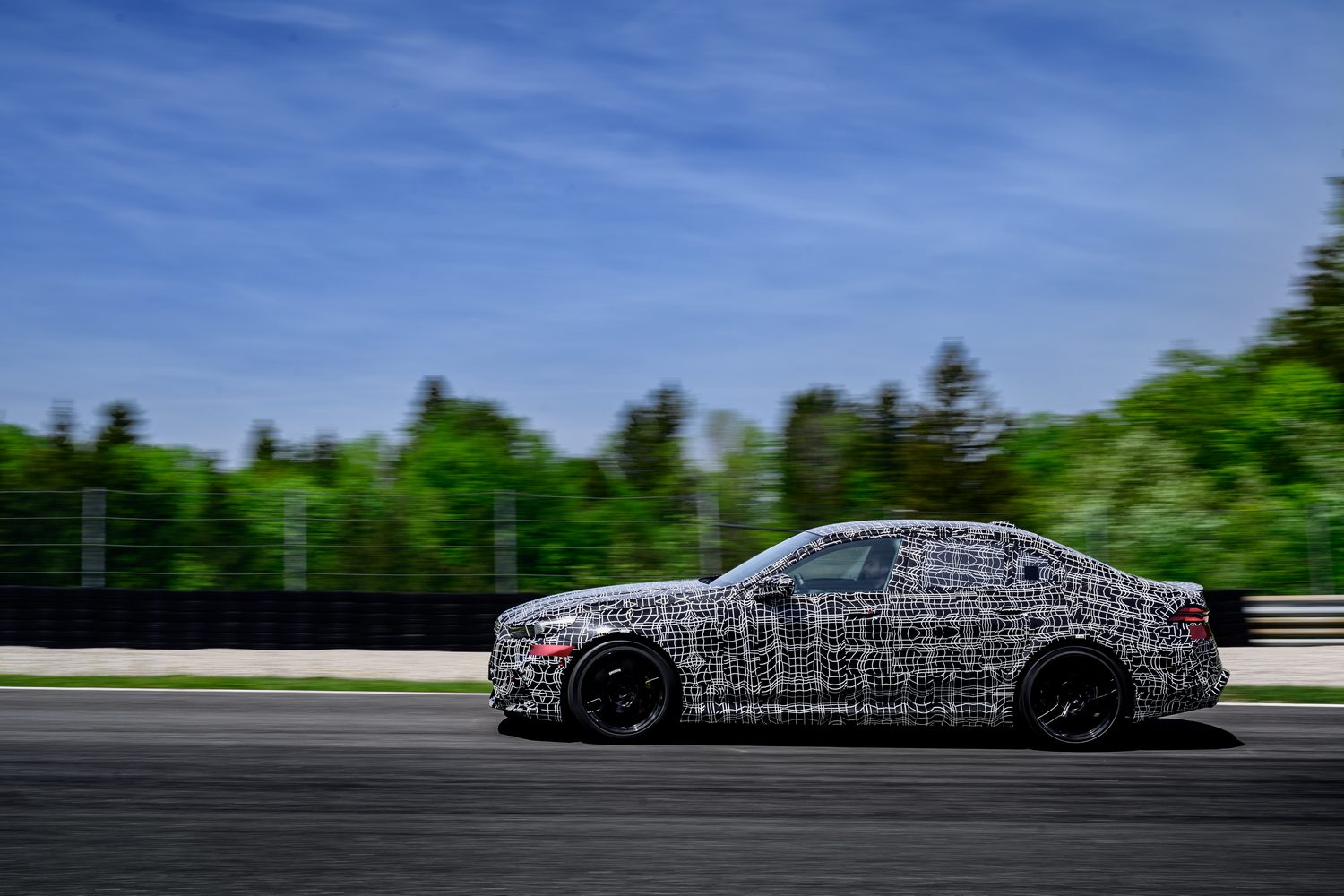
And what of the weight? Well, first impressions suggest that BMW M’s engineers have done a sterling job in disguising it. The powertrain makes light work of the extra mass of course, but just as importantly, we found the brakes to feel good and have no issue keeping the weight in check. The test car was fitted with the optional M Carbon ceramic brake upgrade, while the ‘integrated braking system’ allows the driver to select from two levels of brake pedal response. Unlike most other BMWs we’ve tried with this system, there’s a notable difference between the two in the M5, meaning sharper response in the Sport setting that works particularly well on track.
So it goes well and stops well, what about the corners? To help with that, the M5 has a much wider track than the standard BMW 5 Series, and mix-sized tyres as well. Underneath, there has been extra structural work done to ensure the body and platform for the suspension are stiff. Adaptive damping is standard, too, and there are three baseline damping settings - Normal, Sport and Sport Plus.
As ever in a BMW M car, there’s a wealth of setup options available to the driver at any given moment, which can be grouped into two M modes selectable via little red buttons on the steering wheel. As well as variation of the damping and brakes, there are three levels of engine response, two for steering weighting, three for stability control (DSC) and even the option to vary the level of traction control if you turn off the DSC completely. New to the M5 is a choice of three brake energy regeneration levels, though we didn’t experiment with those.
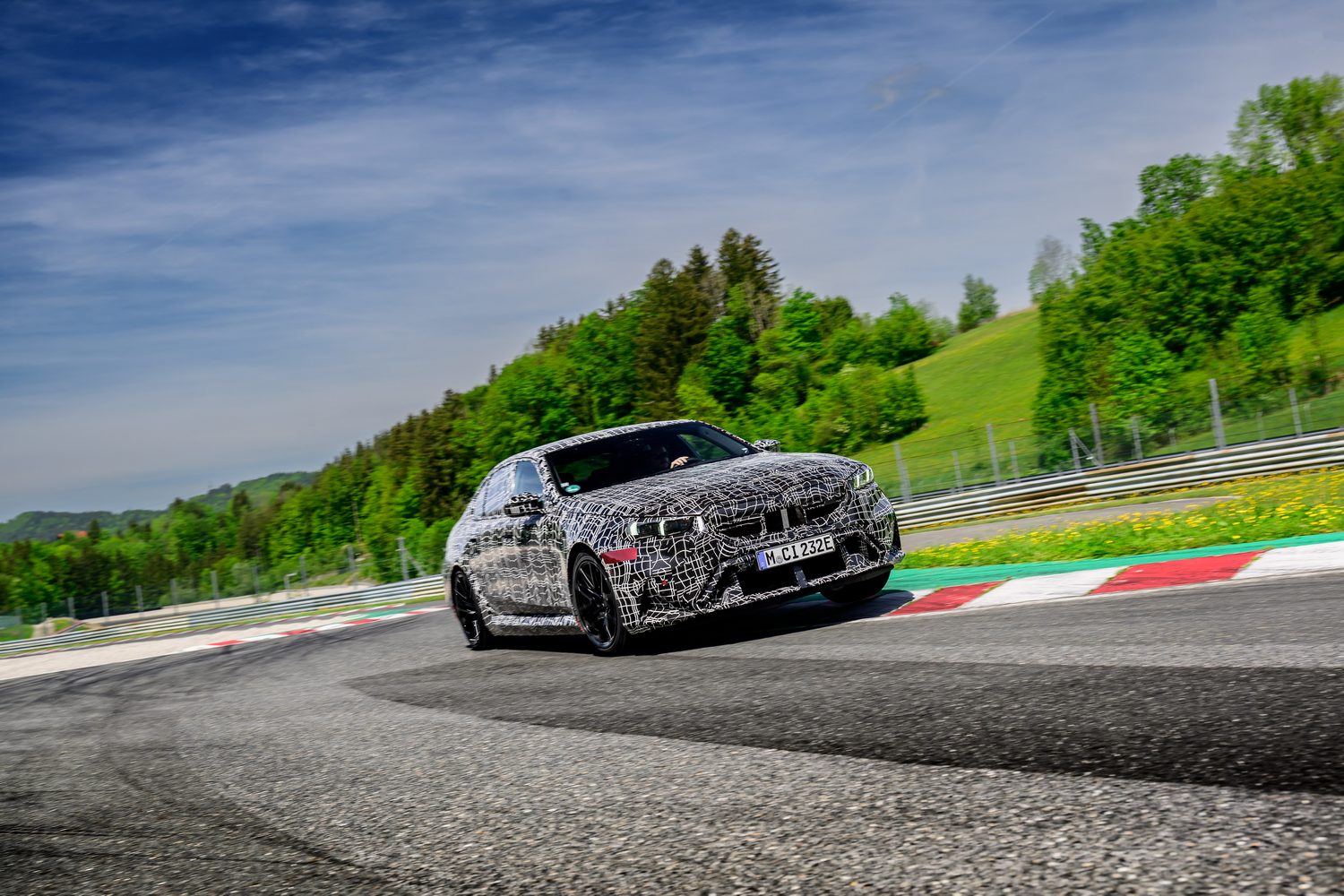
Owners will soon get used to the selection of all these options via the touchscreen and develop their own preferences. There’s a notable difference in the dynamics of the car with every change and while we didn’t get to try the M5 on the road, it was obvious that it rode the bigger kerbs at the Salzburgring with more aplomb than the BMW M4 CS we also sampled on the same day. The M5 also managed higher top speeds on the main straight while feeling more stable doing so.
That could be partly down to a new addition for the M5, as this is the first to come with Integral Active Steer - or rear-wheel steering if you don’t speak BMW. As with all such systems, the M5’s rear wheels turn the opposite direction to the fronts at lower speeds (up to about 70km/h in the case of this car) in a bid to aid manoeuvrability and the feeling of agility through tighter corners. At higher speeds, the rear wheels turn in the same direction to enhance stability. BMW was keen to emphasise that it restricts the system to very small angles so the M5 feels “genuine” and predictable. At most, at lower speeds, it turns by just 1.5 degrees. Interestingly, if the driver has DSC disabled, the changeover threshold increases to 100km/h as it’s assumed the driver wishes to feel the rear moving about more with a sense of ‘pointiness’.
Whatever is going on underneath, the M5 develops huge grip from its front tyres, resisting understeer even in torturously long constant-radius corners at high speeds. That trustworthy front end translates into rapid-fire direction changes through the chicanes, with little or no sense of troublesome weight transfer. The car just gets on with it, using its all-wheel drive to catapult out of the corners onto the next straight. It’s an exhilarating car to drive quickly on track and one that imbues the driver with confidence from the off. Crucially, it still has that BMW M magic that makes the driver feel part of the process.
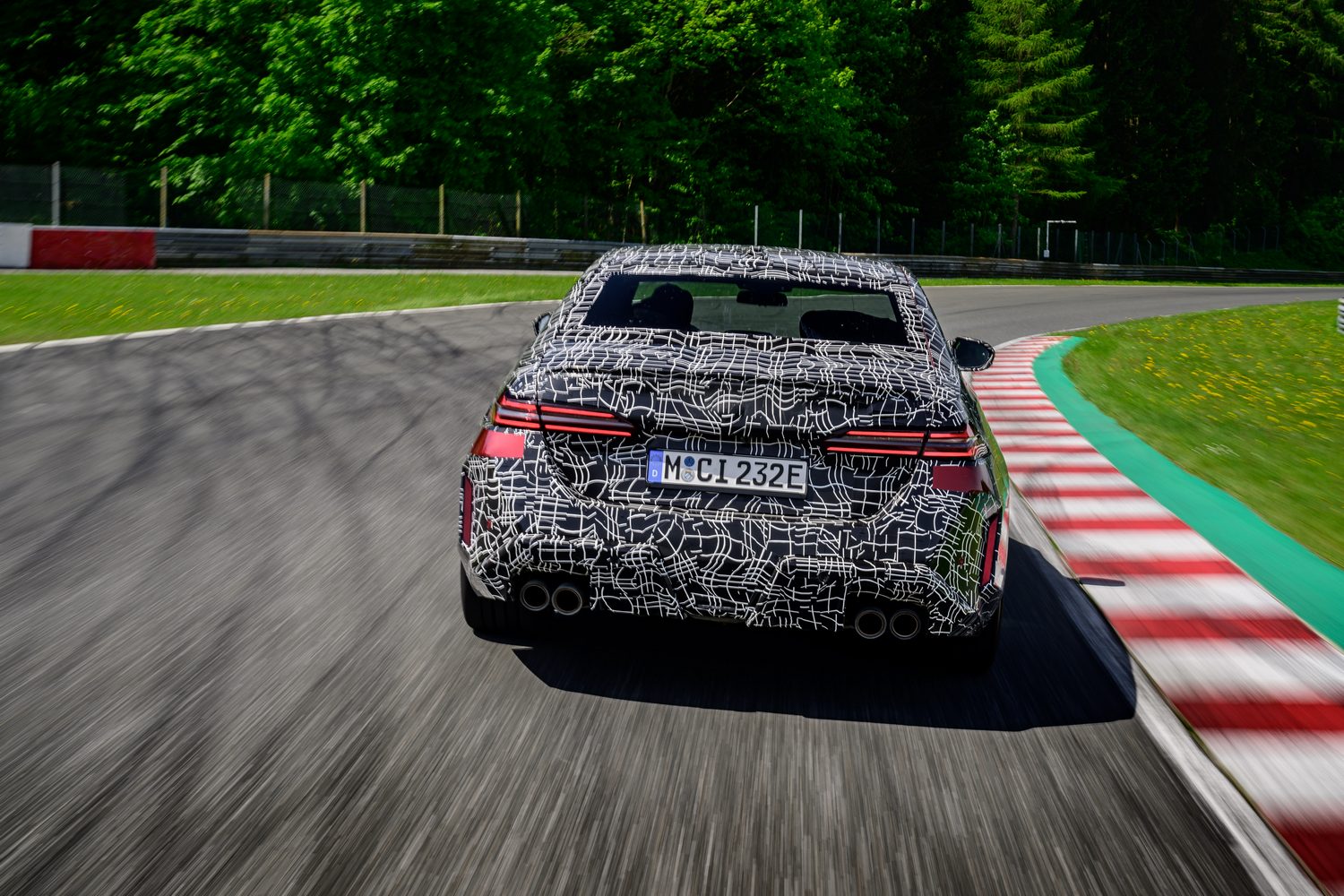
How much is the new BMW M5 in Ireland?
Are you sitting comfortably? The new BMW M5 is about €60,000 cheaper than the car it replaces at an Irish retail price of €136,040. Not only does that make it distinctly less expensive to buy than any other comparable rival, but it’s even more affordable than BMW’s own M3 and M4 in Ireland. The reason for this is simple enough: the plug-in hybrid system results in a CO2 rating of just 37g/km, meaning VRT is just 7.0 per cent for the new M5, versus 41 per cent on the old car.
The reasons you’d buy a BMW M5
If you’re in the market for a seriously high-performance saloon that can be used for everyday duties and long distances, it’s now more difficult than ever to ignore the BMW M5. Yes, this is partly due to the significant price reduction, but in truth that’s just the cherry on top, as fans of the M brand, and the M5 in particular, will be delighted to discover that our first impressions suggest BMW has managed to keep the car’s character and engagement intact despite the extra weight of the hybrid system.
Oh, and if you want to see the finished car, we have a news story on that live, too.
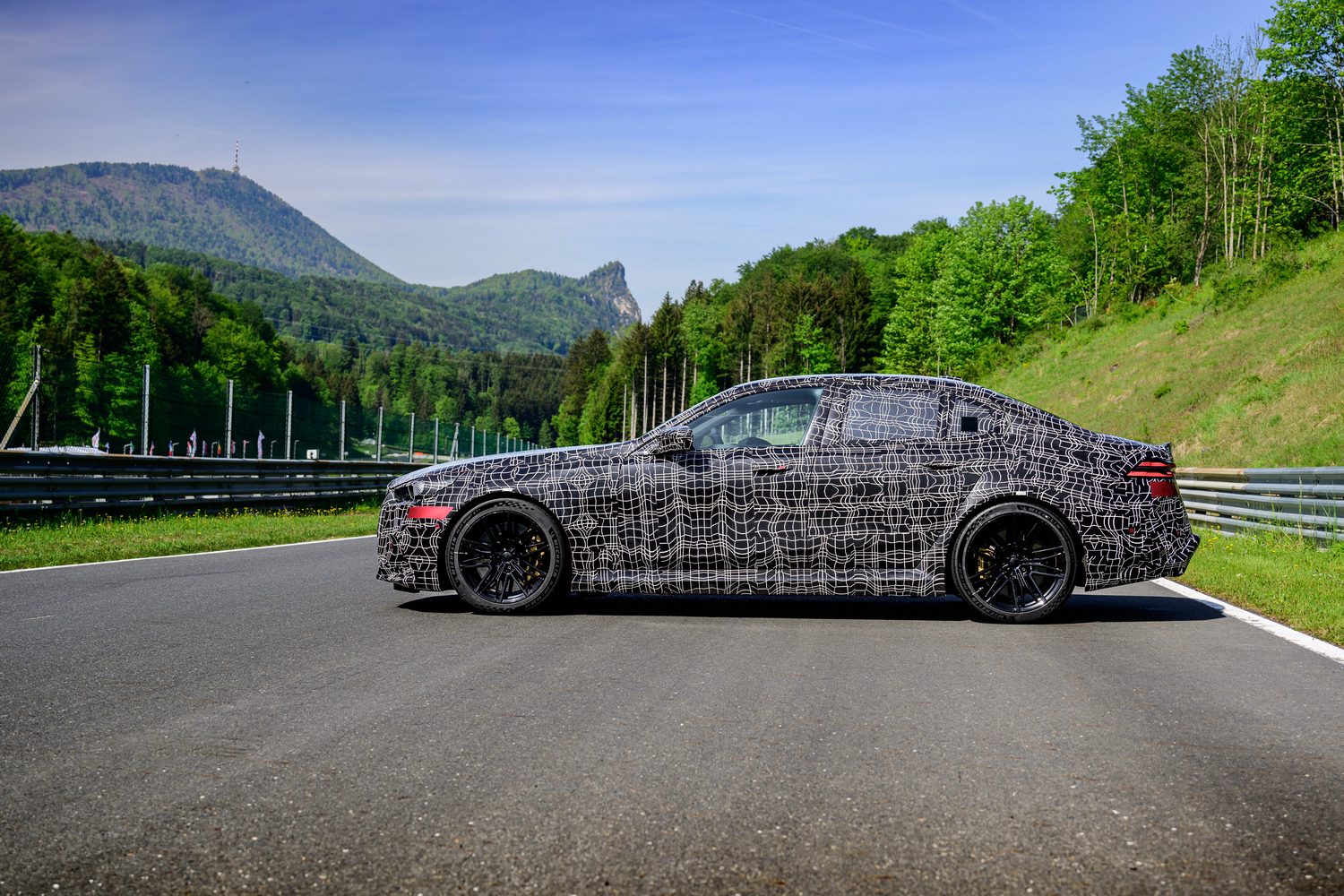
Ask us anything about the BMW M5
If there’s anything about the BMW M5 we’ve not covered, or you’d like advice in choosing between it and other vehicles, you can avail of our (completely free) expert advice service via the Ask Us Anything page.

